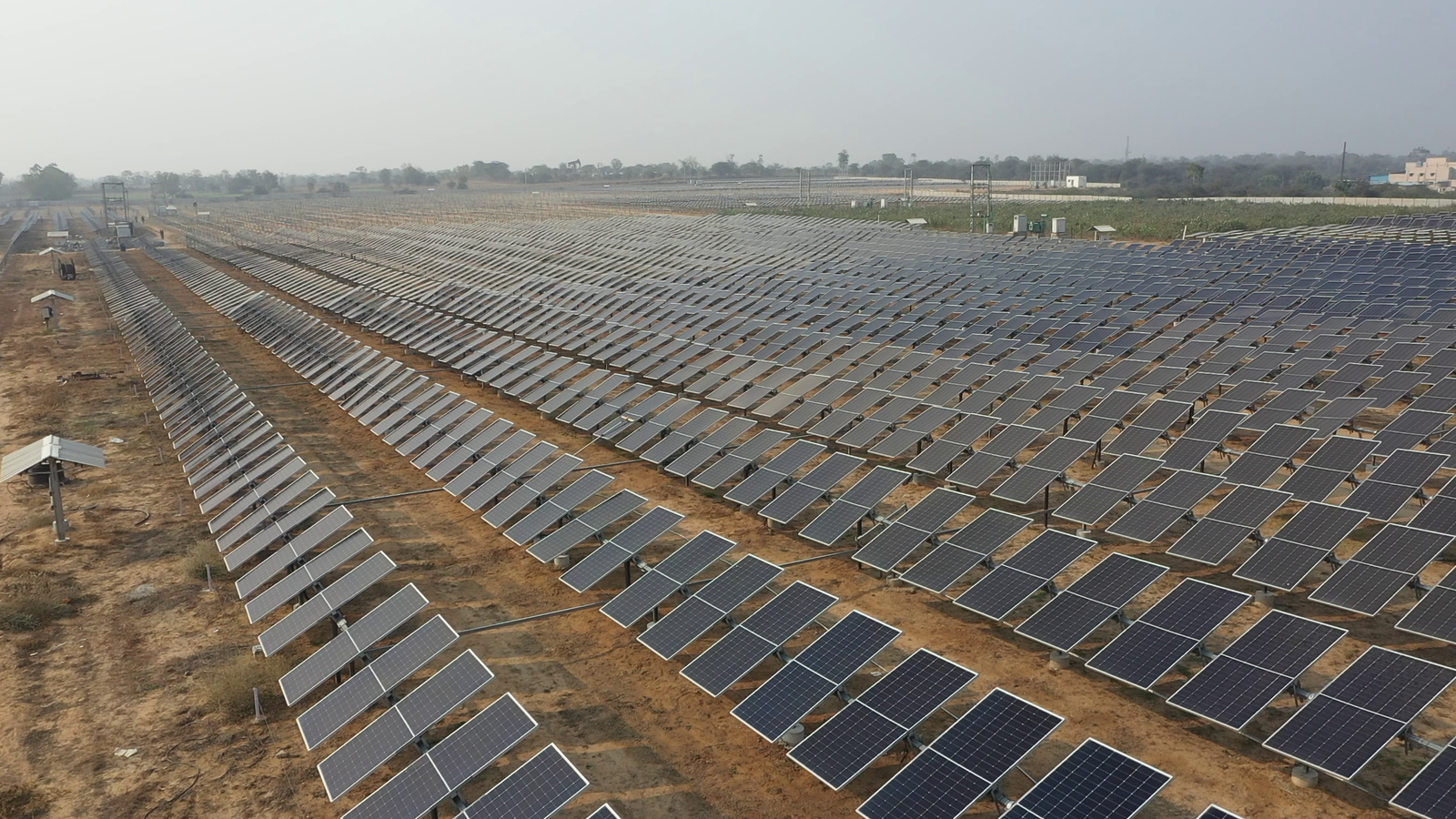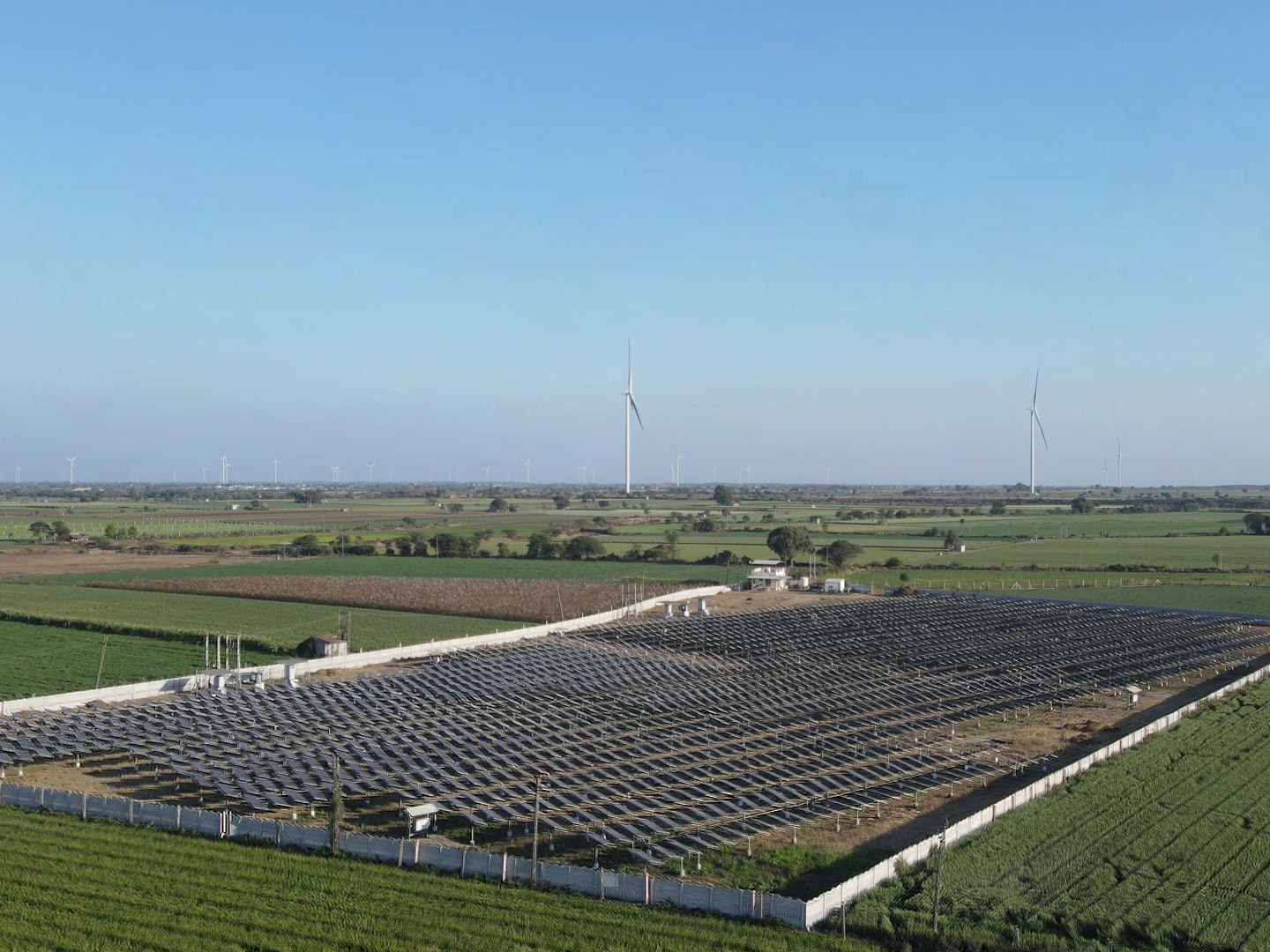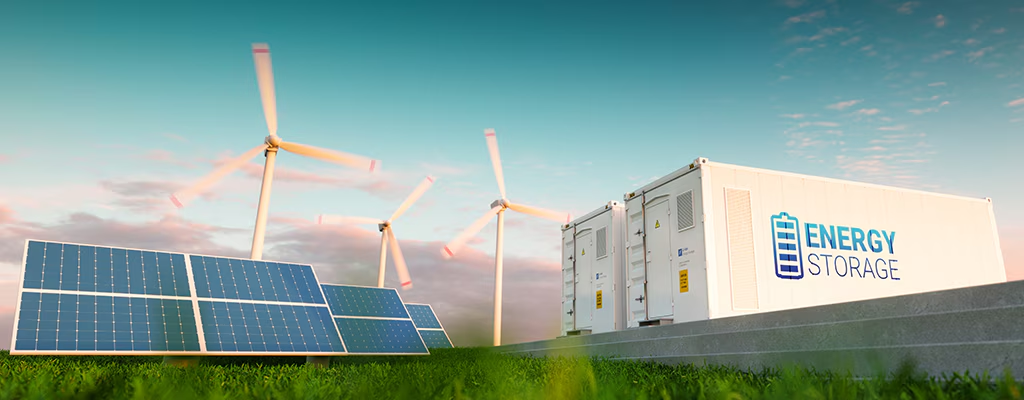As the world transitions towards renewable energy, solar power has emerged as a leading source of clean energy. However, solar energy’s intermittent nature presents challenges for continuous power supply. This is where Battery Energy Storage Systems (BESS) play a crucial role. BESS allows for storing excess solar energy, ensuring reliable power availability even when sunlight is not present.
Table of Contents
In this comprehensive guide, we will explore the importance, components, working mechanism, benefits, types, applications, challenges, and future trends of battery energy storage systems for solar power.
What is a Battery Energy Storage System (BESS)?
A Battery Energy Storage System (BESS) is an advanced technological solution that stores energy in rechargeable batteries for later use. These systems are essential for managing energy supply and demand, particularly when integrating renewable energy sources like solar and wind into the power grid. By capturing excess energy during periods of low demand or high production, Battery Energy Storage System ensures a continuous and reliable power supply, even when production fluctuates due to weather conditions or time of day.
BESS is an essential component of modern solar power systems, providing grid stability, peak shaving, load shifting, and backup power for residential, commercial, and industrial applications.
Components of a Battery Energy Storage System
A well-designed BESS consists of several key components:
1. Battery Modules:
- Composition: Individual battery cells are assembled into modules, which are then organized into racks to achieve the desired voltage and capacity.
- Function: These modules store electrical energy for later use.
- Types: Common chemistries include lithium-ion, lead-acid, and flow batteries.
2. Battery Management System (BMS):
- Function: Monitors and manages the performance, safety, and health of the battery modules.
- Responsibilities: Ensures batteries operate within safe parameters, balancing charge levels, and preventing issues like overcharging or overheating.
3. Power Conversion System (PCS):
- Function: Converts direct current (DC) stored in batteries to alternating current (AC) for use in electrical grids and vice versa.
- Components: Includes inverters and may feature bidirectional capabilities to allow for both charging and discharging processes.
4. Energy Management System (EMS):
- Function: Optimizes the operation of the BESS by controlling charge and discharge cycles.
- Responsibilities: Manages energy flow based on demand, availability, and economic factors to enhance efficiency and lifespan of the system.
5. Thermal Management System:
- Function: Maintains optimal operating temperatures for battery modules.
- Components: Utilizes heating, ventilation, and air conditioning (HVAC) systems to regulate temperature, ensuring performance and safety.
6. Fire Suppression System:
- Function: Provides safety measures to detect and suppress potential fires within the BESS.
- Components: Includes sensors and suppression agents designed to address fires without damaging the equipment.
7. Enclosure:
- Function: Houses and protects the BESS components from environmental factors.
- Design: Constructed to withstand various conditions, ensuring the safety and longevity of the system.

How Does a BESS Work with Solar?
1. Energy Generation – Photovoltaic (PV) panels convert sunlight into direct current (DC) electricity during daylight hours. Excess energy generated—beyond immediate consumption—is directed to charge the Battery Energy Storage System, storing energy for later use.
2. Battery Charging – When solar energy production exceeds demand, the extra electricity charges the Battery Energy Storage System. A battery management system (BMS) monitors charging to prevent overcharging and improve efficiency.
3. Energy Storage – The BESS stores the excess energy for later use, ensuring that energy is not wasted. Advanced thermal management systems maintain battery temperature to extend lifespan.
4. Discharging Phase – If the battery is fully charged and solar panels are still producing, excess energy can be sent to the grid for credits (net metering). The BESS can also draw power from the grid during off-peak hours to charge when electricity rates are low.
5. Grid Integration (if applicable) – If the battery is fully charged and solar panels are still producing, excess energy can be sent to the grid for credits (net metering). The BESS can also draw power from the grid during off-peak hours to charge when electricity rates are low.
Benefits of Using BESS for Solar
1. Energy Independence and Grid Resilience
By storing self-generated solar energy, users can reduce their reliance on the grid, leading to greater energy autonomy. This independence is particularly beneficial during grid outages or in regions with unstable power supplies, as the BESS can provide backup power to maintain essential operations.
2. Enhanced Utilization of Renewable Energy
Solar energy production is subject to fluctuations due to weather conditions and time of day. A BESS stores excess energy generated during peak sunlight hours, making it available during periods of low production, such as nighttime or cloudy days. This capability ensures a consistent energy supply and maximizes the use of renewable resources.
3. Financial Savings and Demand Charge Management
Utilizing stored energy during peak demand periods can lead to significant cost savings. Businesses and homeowners can avoid high electricity rates by discharging the BESS when energy prices are elevated. Additionally, managing energy consumption in this manner can reduce demand charges imposed by utility companies.
4. Environmental Impact Reduction
Incorporating a BESS with solar installations decreases dependence on fossil fuels, leading to a reduction in greenhouse gas emissions. This transition to cleaner energy sources contributes to environmental conservation and supports global efforts to combat climate change.
5. Increased Property Value
Properties equipped with solar panels and BESS installations are often more attractive to buyers due to the promise of lower energy costs and sustainable living. This enhancement can lead to an increase in property value and marketability.
6. Participation in Energy Markets
In some regions, stored energy can be sold back to the grid during peak demand times, providing an additional revenue stream for BESS owners. This practice not only benefits the individual but also aids in grid stabilization by supplying energy when it’s most needed.
7. Low Maintenance and Operational Costs
Modern BESS units are designed for durability and require minimal maintenance. Once installed, they operate seamlessly with solar panels, providing a hassle-free energy solution that can lead to long-term operational cost savings.

Types of Battery Energy Storage Systems
1. Lithium-Ion Batteries
- Lithium-ion batteries are the kind of battery most frequently seen in energy storage systems. 90% of the worldwide market for grid battery storage is made up of lithium-ion batteries. The kind of battery that you are most likely to be familiar with is the lithium-ion battery. Laptops and mobile phones both use lithium-ion batteries.
- In addition to being lightweight, a lithium-ion battery is probably going to cost more than some of the other alternatives available. The U.S. Department of Energy’s 2019 Energy Storage Technology and Cost Characterization Report states that when cost, performance, calendar and cycle life, and technological maturity are taken into account, lithium-ion batteries are the best choice for a 4-hour energy storage system.
2. Lead-Acid Batteries
- With a shorter lifespan but the lowest cost, lead-acid batteries are the most used rechargeable battery technology in the world. With more than 90% of their material recovered, they are environmentally friendly and have a well-established recycling system. According to the Energy Storage Association, when utilized actively, lead-acid batteries may withstand 5000 cycles to 70% depth-of-discharge, or around 15 years of life.
- According to a Department of Energy analysis, lead-acid batteries have a cycle life of fewer than three years while having high levels of technological and production preparedness. According to the Energy Storage Association, lead-acid batteries are a suitable option for battery energy storage systems since they are inexpensive, recyclable, and safe because their active components don’t catch fire.
3. Flow Batteries
- Flow batteries use liquid electrolytes to store energy. This makes them highly scalable and capable of long-duration storage. The Vanadium Redox Flow Battery (VRFB) is one of the most popular types for grid-scale storage.
4. Sodium-Ion Batteries
- Sodium-ion batteries are emerging as an alternative to lithium-ion, especially in areas where sodium is more abundant and cost-effective. They are better suited for high-temperature environments and offer safety advantages.
5. Zinc-bromine flow batteries
- When the battery is charged, zinc metal is plated onto anode plates in the electrochemical stack to store energy in the zinc-bromine battery, a hybrid redox flow battery. Zinc-bromine batteries have a lot of potential in terms of cost and lifespan, according to the U.S. Department of Energy, but their production and technological readiness levels are now low.
- As new battery types are always being produced, the use of battery energy storage systems is growing quickly. Compressed air energy storage (CAES), flywheels, pumped storage hydropower (PSH), and ultracapacitors are examples of non-battery technologies utilized in energy storage systems. Adoption of energy storage is increasing because it may make companies and organizations energy independent, removing the need for power disruptions and local utility expenses.
6. Solid-State Batteries
- Solid-state batteries are considered the next frontier in battery technology. They replace the liquid electrolyte with a solid material, offering improved energy density, safety, and charging speed.
Applications of BESS in Solar Energy
1. Grid Stabilization
BESS can provide fast frequency response, ramping up power supply when grid frequency falls, and absorbing excess energy when frequency rises, thereby maintaining grid stability.
2. Microgrids and Off-Grid Solutions
In remote areas or regions with unreliable grid access, BESS combined with solar panels can form self-sufficient microgrids, providing consistent power without dependence on centralized grids.
3. Peak Shaving and Load Management
By discharging stored energy during peak demand periods, BESS helps in reducing the load on the grid and managing energy costs effectively.
4. Backup Power Supply
BESS provides backup power during electrical disruptions, ensuring continuous operation of critical facilities and services.
5. Energy Trading and Grid Services
Stored energy in BESS can be sold back to the grid during high-demand periods, providing additional revenue streams and supporting grid stability.

Challenges of BESS for Solar
Despite its benefits, BESS faces several challenges:
1. High Initial Costs
The upfront investment required for BESS remains substantial, encompassing expenses for batteries, inverters, installation, and integration. While costs are gradually decreasing, they still pose a significant barrier to widespread adoption.
2. Limited Lifespan and Degradation
Batteries experience wear over time, with performance diminishing due to charge-discharge cycles and environmental factors. This degradation can lead to reduced efficiency and necessitate costly replacements.
3. Environmental and Safety Concerns
The production and disposal of batteries involve environmental challenges, particularly concerning the extraction of raw materials and potential pollution. Additionally, safety issues, such as the risk of fires, have been reported in large-scale installations.
4. Grid Integration and Regulatory Hurdles
Integrating BESS into existing power grids requires navigating complex regulatory frameworks and technical standards, which can vary by region. These challenges can delay deployment and increase costs.
5. Supply Chain and Resource Limitations
The availability of essential materials, such as lithium, is finite, leading to potential supply chain constraints and increased costs. This scarcity underscores the need for sustainable sourcing and recycling practices.
6. Technological Limitations
Current battery technologies may not meet all performance requirements, such as energy density, charging speed, and operational lifespan. Ongoing research aims to develop advanced materials and designs to overcome these limitations.
7. Economic Viability
The profitability of utility-scale BESS projects can be affected by market dynamics, including energy prices and demand fluctuations. Operators must carefully assess economic factors to ensure financial sustainability.
Future Trends in Battery Energy Storage Systems
1. Advancements in Battery Technology
- Solid-State Batteries: Offering higher energy density, improved safety, and longer lifespans compared to traditional lithium-ion batteries.
- Sodium-Ion Batteries: A cost-effective and abundant alternative to lithium-ion, reducing dependence on rare materials.
- Flow Batteries: Ideal for large-scale storage with extended charge-discharge cycles, making them suitable for grid applications.
2. Faster Charging and Longer Lifespan
- Ultra-fast charging technologies are being developed to significantly reduce downtime.
- Battery recycling and second-life applications are gaining traction to extend battery usability and reduce waste.
3. Growing Role in Grid Stability and Decentralization
- Virtual Power Plants (VPPs): Aggregating multiple BESS units to support grid balancing and demand response.
- Microgrid Integration: Enabling localized energy solutions for remote areas, industries, and disaster recovery.
4. Expansion of Utility-Scale Energy Storage
- Governments worldwide are investing in large-scale BESS projects to stabilize grids and support renewable energy expansion.
- China aims for 40 GW of battery storage by 2025, while the U.S. and Europe are accelerating investments in grid-connected BESS.
5. Declining Costs and Increased Adoption
- As battery production scales up, costs continue to decline, making BESS more accessible for residential, commercial, and industrial users.
- Incentives and subsidies are driving widespread adoption in key markets.
6. AI and Smart Energy Management
- AI-powered predictive analytics optimize battery performance and energy trading.
- Smart BESS solutions enhance real-time energy distribution, reducing inefficiencies.
Conclusion
The Battery Energy Storage System (BESS) is a game-changer for solar power, enabling greater energy efficiency, reliability, and independence. With technological advancements and decreasing costs, BESS is set to revolutionize renewable energy integration worldwide.
Battery Energy Storage Systems (BESS) have revolutionized the way solar energy is stored, managed, and utilized. By improving grid stability, enabling off-grid solutions, reducing energy costs, and ensuring backup power, BESS enhances the efficiency and reliability of solar power. As the world transitions toward a sustainable energy future, integrating BESS with solar energy will be crucial in maximizing renewable energy potential, reducing carbon footprints, and achieving energy independence. Whether for residential, commercial, or industrial applications, BESS is a game-changer in the renewable energy sector.
Looking to optimize your solar power system with a reliable battery energy storage solution? At Soleos Solar, we provide cutting-edge solar and BESS solutions tailored to your energy needs. Contact us today to learn how you can maximize your solar investment and achieve energy independence!
